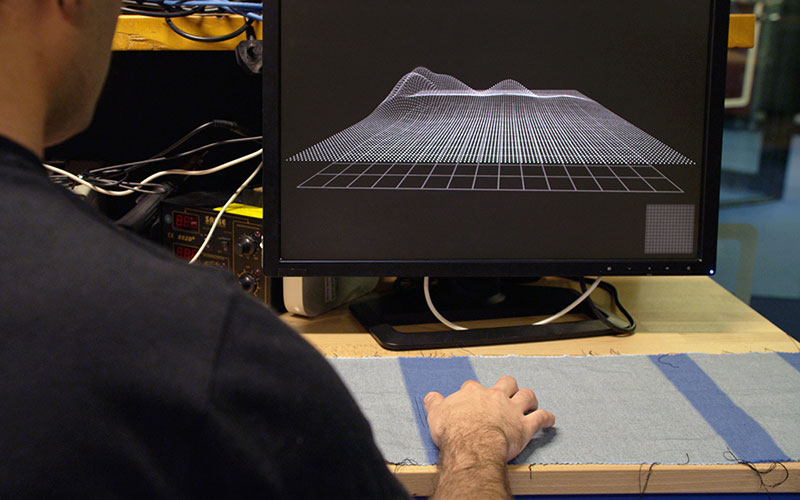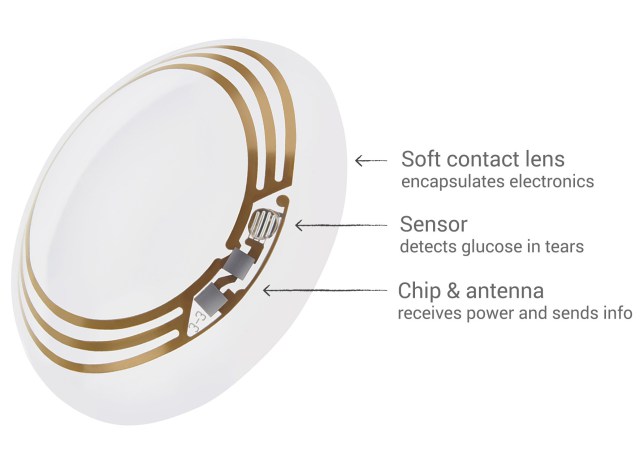Affiliate links on Android Authority may earn us a commission. Learn more.
Wearables beyond the wrist

Ever since wearable technology burst onto the scene the landscape has been dominated by wrist-worn devices. We’ve had wave after wave of fitness trackers, and the smartwatch category is finally getting competitive, but the term wearable covers a whole lot more than our wrists. We’re not talking about smart glasses here either. Today, we’re going to take a look at how technology could be blended seamlessly into our clothing.
Finding ways to weave small electronic sensors into clothes could enable t-shirts or jackets to perform the same sorts of functions that fitness trackers and smartwatches are handling now. It could also lead to new methods of control. Imagine tapping on your armchair to change the channel, swiping your sleeve to take a call, or even crossing your legs to pause the music you’re listening to.
Will these kinds of wearables take off? What will they look like? How will they work? Let’s take a look at some examples.
Project Jacquard
Google’s ATAP (Advanced Technology and Projects) division showed off Project Jacquard at I/O this year with the aim of bringing touch-sensitive clothing to the mainstream. The demo revealed how it might work. It’s a highly conductive yarn that can be weaved into clothing or any other material. It can create gesture-sensitive areas that could be invisible in the finished garment, but it requires embedded electronics to work. The idea is to miniaturize these to button size, and they’ll link up the clothing to your smartphone or another device wirelessly, via Bluetooth (at the moment).
The smart move here on Google’s part is to go directly to fashion brands with the technology and work with them on delivering it in garments. One of the major problems for wearables so far has been that tech companies don’t necessarily know how to make something that people want to wear from an aesthetic point of view. Apparently Levi is already on board and that’s the kind of brand that could give something like this a big push into the market.
It’s a long way off right now, and there are a lot of hurdles to overcome. The yarn is apparently washable and there’s no issue making the electronics waterproof, but does it make sense to have a complete set of electronics in each item of clothing? What would that add to the cost? What would happen with repairs? Can it be recycled? It may make more sense for the fabric to be part of the clothing, but the electronics to be a separate component that’s plugged in when needed. These are all issues that have yet to be solved.
Google also showed off Project Soli at I/O, which is a way for our wearables to track micro-gestures. It could empower us to make wee hand gestures to activate features. It uses radar to track our hand movements, so you could maybe make a gesture like turning a volume dial down in the air and actually turn the volume down.
Other smart clothes

There are a lot of smart clothes due to hit the market. The fitness category, predictably enough, is leading the way again. We’ve seen the Athos apparel line, Cityzen Sciences D-shirt, Ralph Lauren’s Polo Tech Shirt, Sensoria’s Smart Socks, and Hexoskin’s clothing line. They all track your activity and send biometric data to an app on your smartphone or tablet.
There are also some slightly wacky-sounding ideas in wearables. Back at CES there was a motorized belt called Belty that got a lot of attention. It can automatically loosen and tighten your belt for comfort, monitor your waistline, and of course track your fitness.
The Bionic Bra is an attempt to create an automatically adjusting bra for women to free them from the pain of improper breast support.
Then there’s the huge potential in the kid’s market, driven by parent paranoia, where we’re starting to see wearables like Pacif-i, which is a “Smart Pacifier” that tracks your child’s temperature and sends updates to your Android or iOS device.
Project ATTACH
Another interesting project that caught our eye is taking place at the University of California, San Diego, where a government grant of $2.6 million is funding research into smart fabric that’s capable of regulating your temperature.
The idea behind Project ATTACH is that the fabric gets thicker when the environment grows colder and thinner if it gets hotter.
There’s even talk of it being powered by biofuel cells that can harvest electrical power from human sweat. It’s a cool idea, but we don’t expect to see anything like this for quite some time.
A wearable ecosystem
A lot of these wearables are limited in scope. The expense for a single item of clothing that has limited capabilities is definitely off-putting. But perhaps if we reach platform standardization for wearable clothing we’ll really see some movement. If Google can get fashion designers interested in using Jacquard, and get developers interested in creating apps for it, then it could be uniquely well-placed to drive a whole ecosystem.
As with every hardware platform, it only becomes vital when we see a set of killer apps emerging. Wearables so far haven’t really moved beyond a shortcut to the phone in our pocket. There’s surely untapped potential here, and clothing that’s interactive seems to offer an entirely new avenue for creative thought about what wearables might do for us, but until developers create those apps it’s tough to see this taking off.
Who’s buying?

There are some clever ideas for how wearables might improve life for people suffering from various conditions. Google’s smart lenses for diabetics are a particularly interesting example. For sports-pros the fitness tracking wearables offer some benefits in terms of comfort and accuracy over existing technology. They’re sure to serve a niche demand, but do the rest of us really need this kind of technology? There are still questions about how you’d care for a smart garment, how to power it, and even how safe it would be. The potential is exciting, but that’s all it is for now.
What wearable are you waiting for? What would really get your attention and prompt you to hand over your cash? Hit the comments.